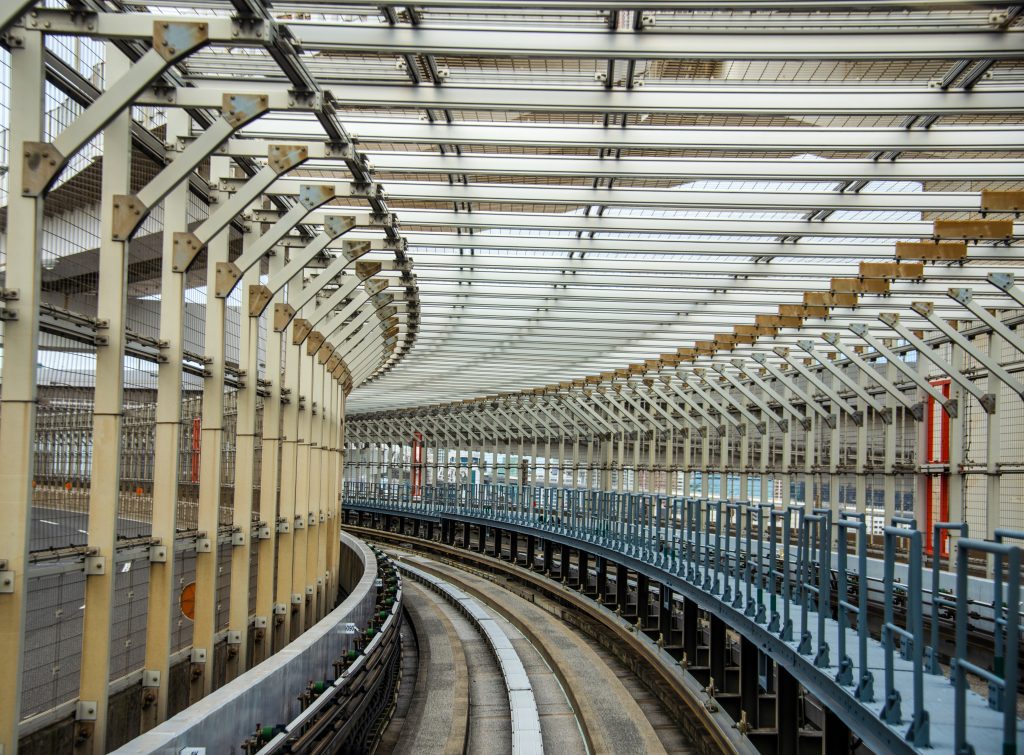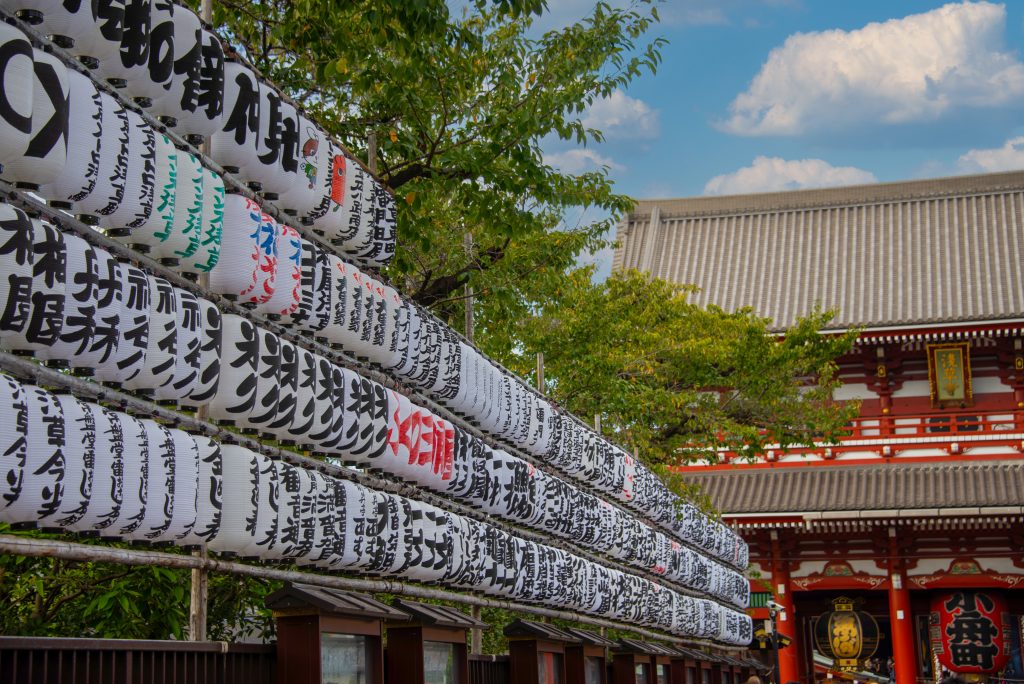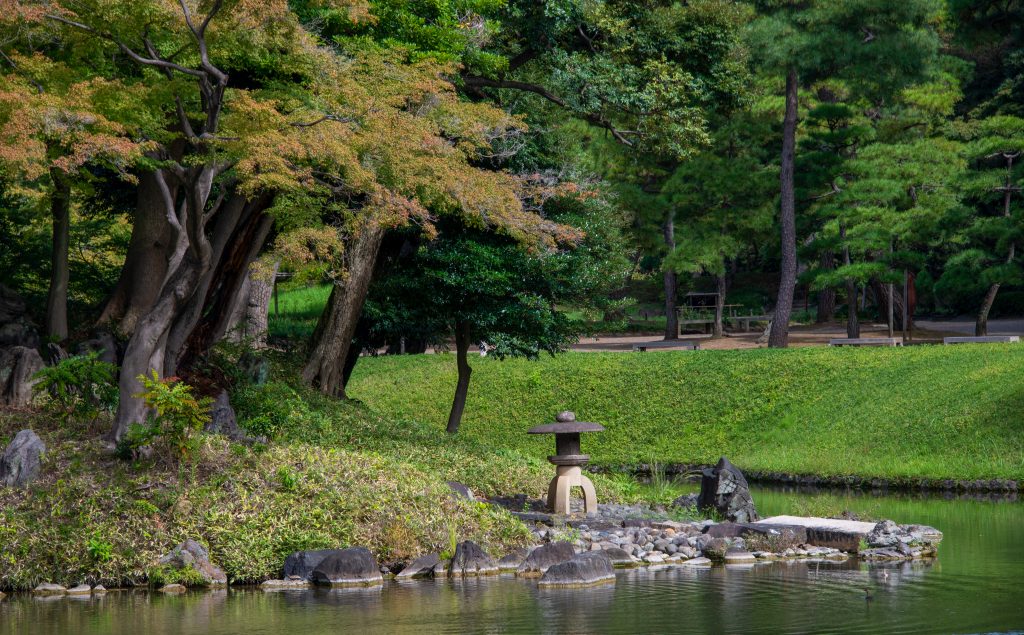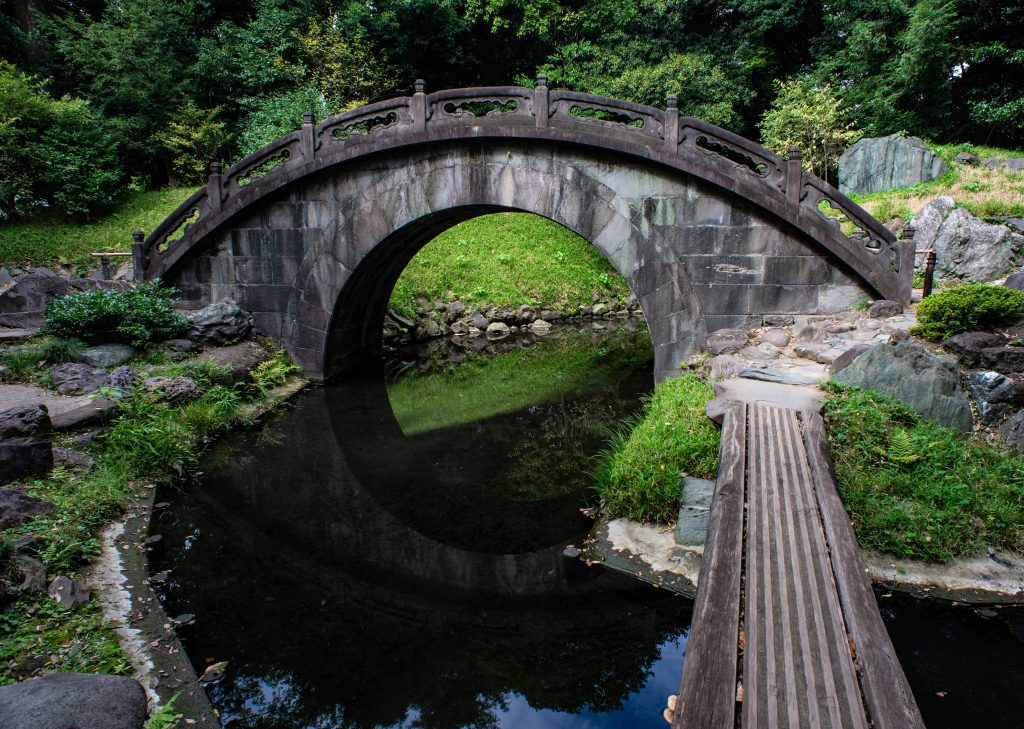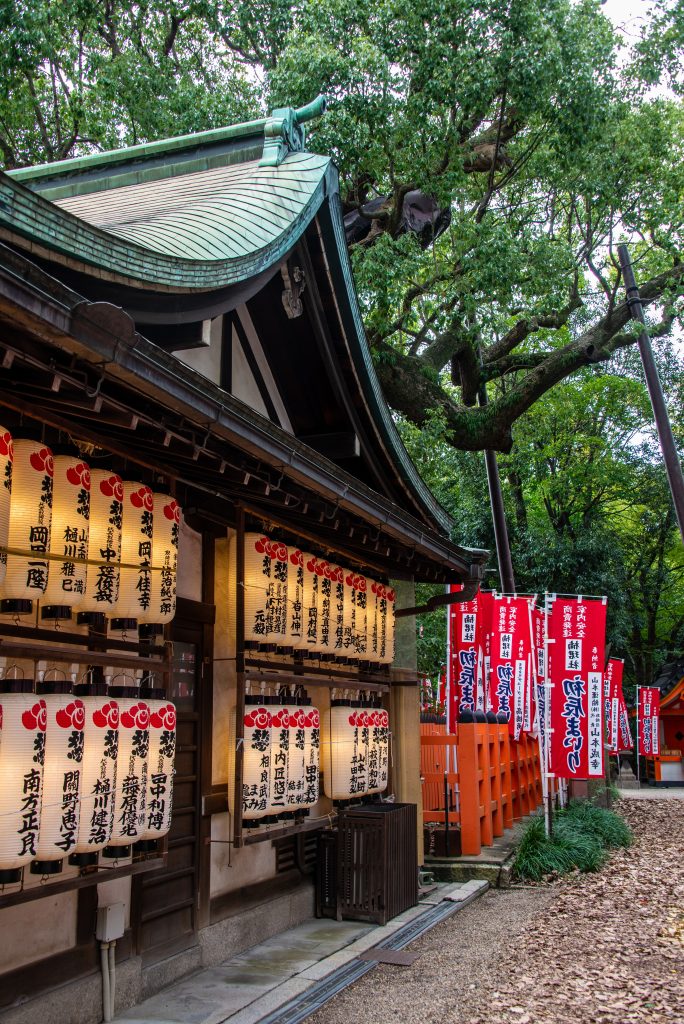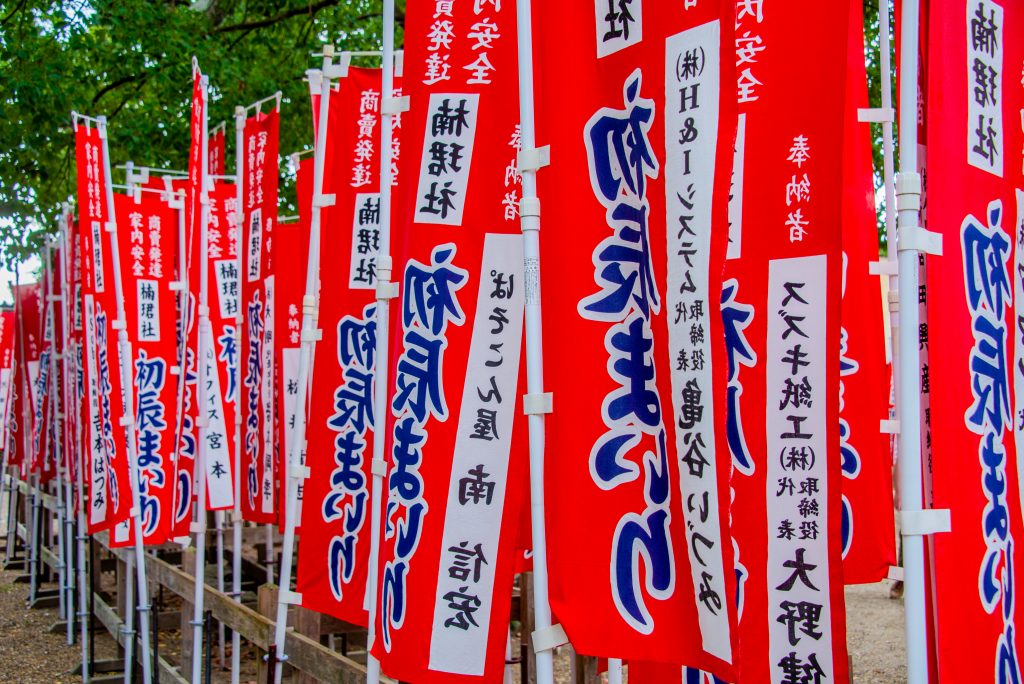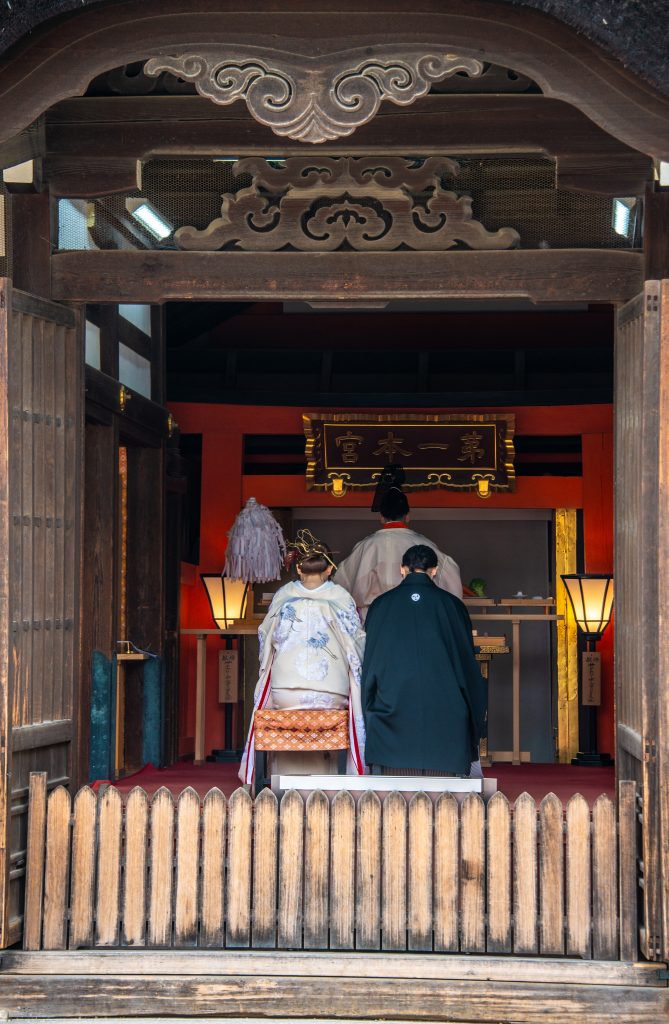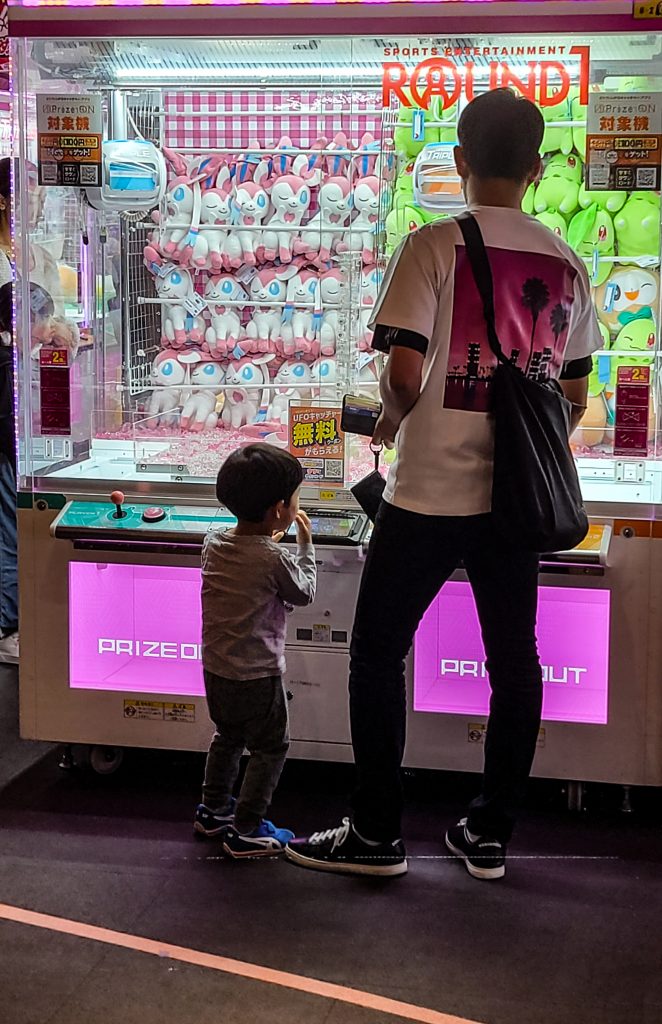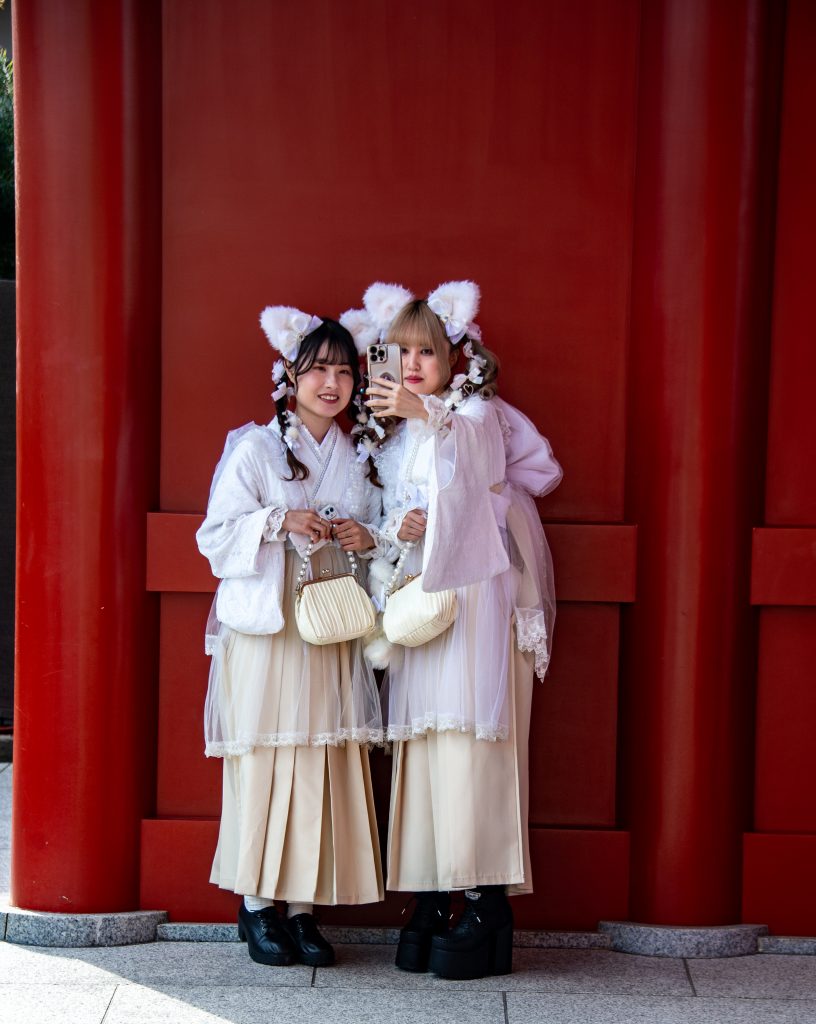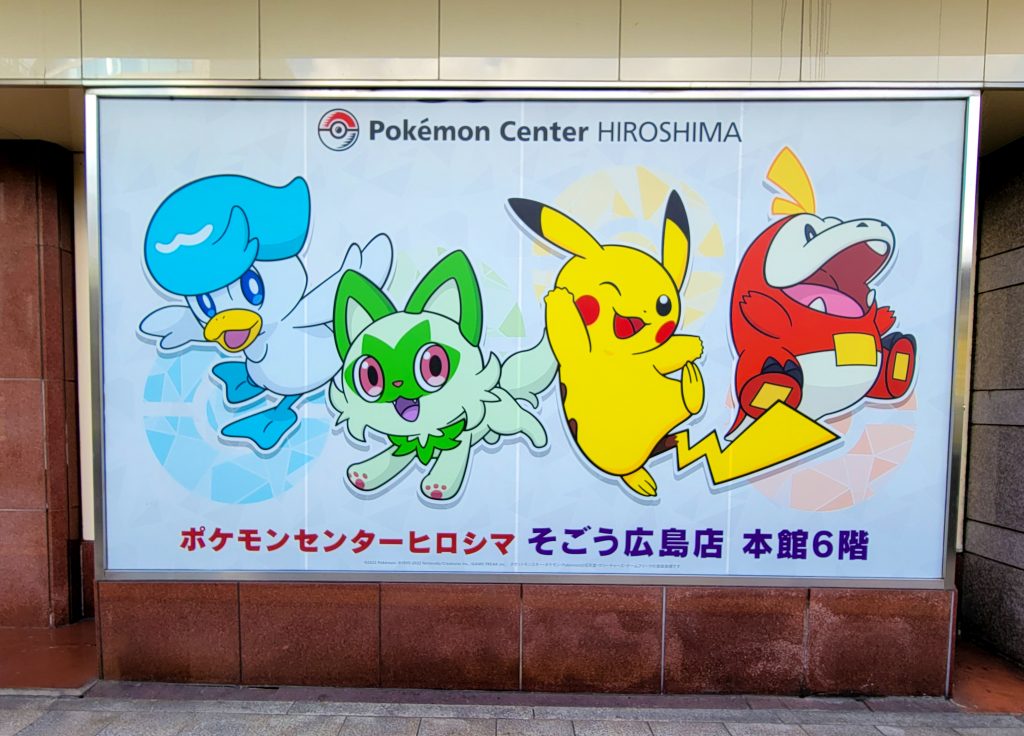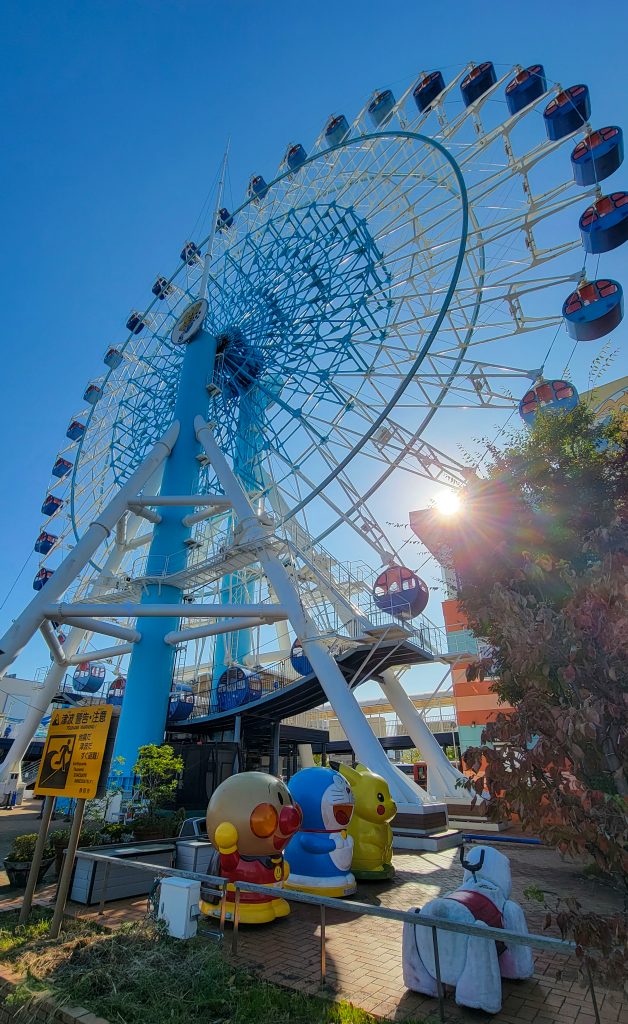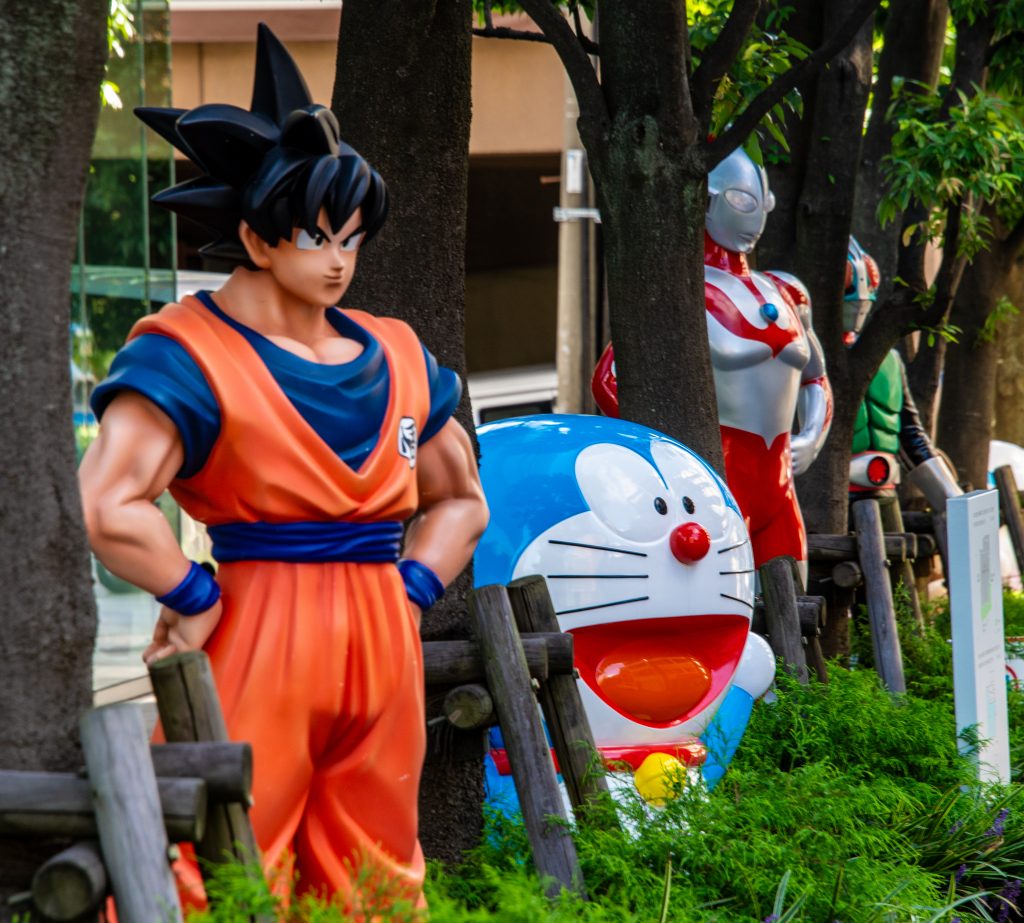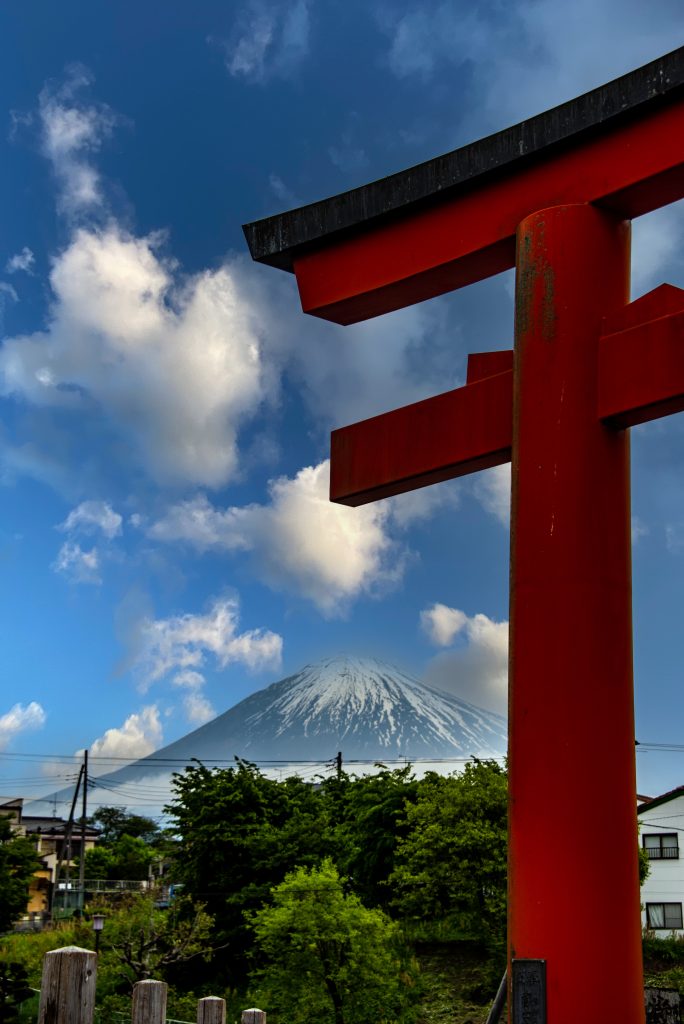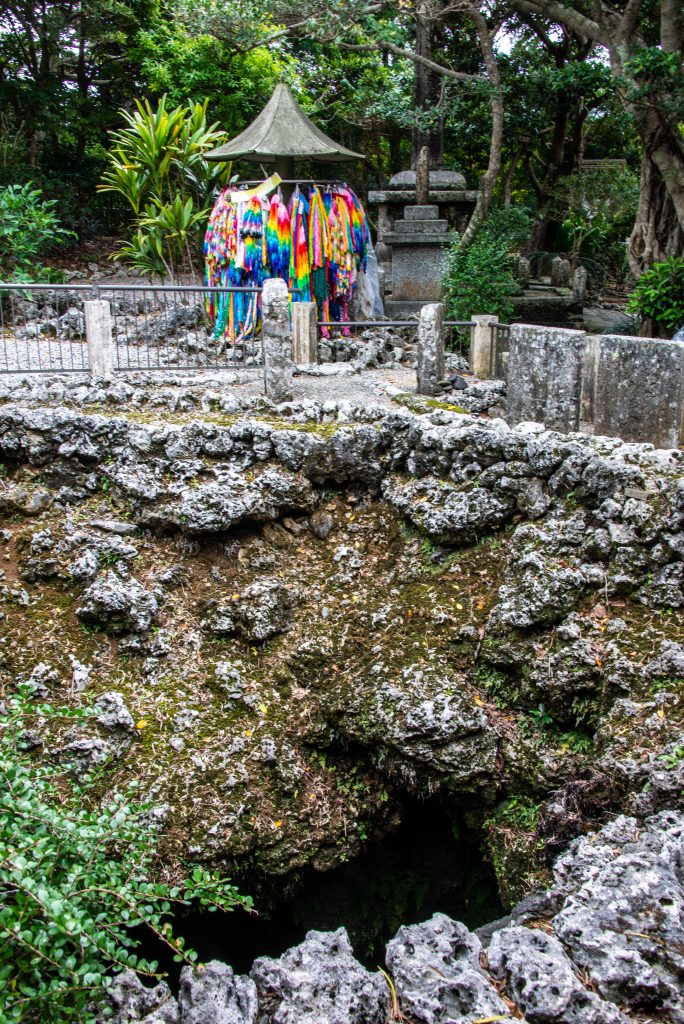By Corey Sandler
Japan sits perched on the edge of the Pacific’s Ring of Fire, which gives it earthquakes, fumaroles, hot springs, and more than a few active volcanos.
And it also holds the unhappy distinction of being the site of the only two atomic bomb wartime attacks: two days in August 1945 which all but destroyed a pair of cities.
A few months ago we returned to Japan for several weeks, and among the places we visited were Beppu, Kagoshima, Hiroshima, and Nagasaki.
Each of these cities, in different ways, made us feel very small when measured against natural and manmade extremes.
Beppu
We went to hell in Beppu.
The town on the southern island of Kyushu doesn’t have a heck of a lot going for it, with the exception of its numerous steaming gas vents and eight geothermal hotspots.
In Japanese they are called joguku, which can be roughly translated from Buddhist beliefs as hells. I’m pretty sure that Western visitors and modern residents have seized on a hot topic to lure tourists.
Japanese Buddhism includes the concept of hot and cold regions below the surface of the earth, ruled over by Emma-ō, the lord of death. He judges the dead by consulting a register that lists all of their sins.
Residency is not necessarily permanent; the dead can move out after they serve their sentence or reduce their time by responding to the prayers of the living.
There are turquoise and chalky white and green hells, but the one that grabbed my attention was Chinoike Jigoku, which means “blood hell” or “bloody hell.” Either way, it is more like a hot bowl of rust, which makes sense since its color comes from iron oxide bubbling up to the surface.
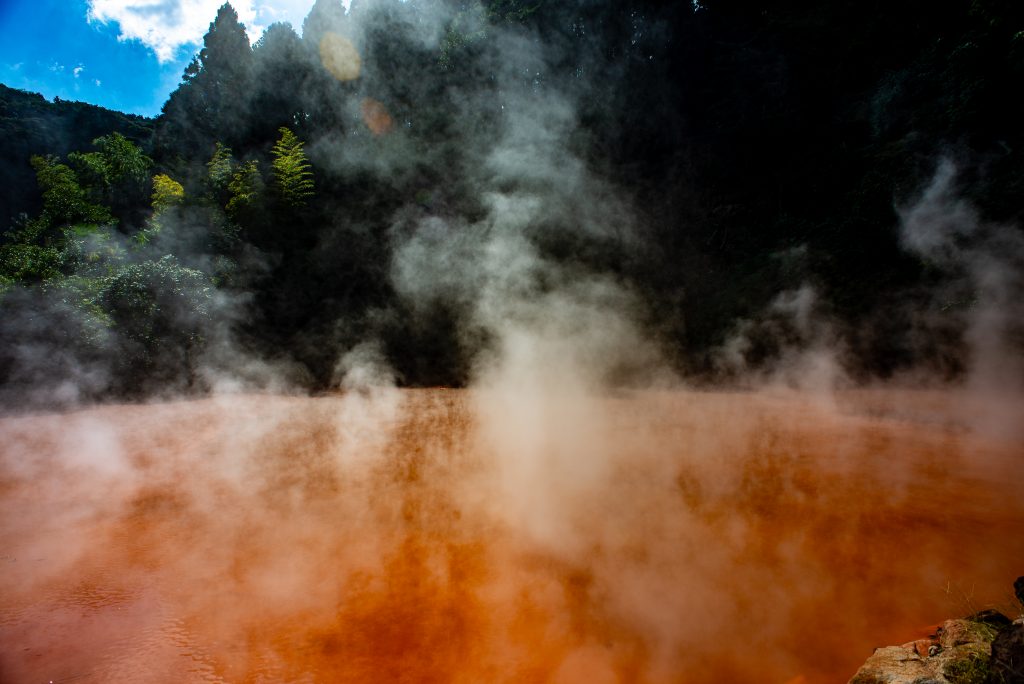
The ponds were somewhat threatening. Much worse were the souvenir stands which you had to pass through to get to them. Commercial hell, they were, filled with trinkets and candies and bath salts. And lots of kittens.
Kagoshima
A few days later we visited Kagoshima, another relatively obscure port that features an impossible-to-overlook geologic formation.
The local tourism folk would have you call the place the “Naples of the Eastern World.” Not for its architecture or for the invention of that essential food, pizza. What Kagoshima shares with Naples is the fact that it is a city with a hyper-active volcano in very close proximity to just about everything.
Sakurajima is Japan’s most active volcano.
Sakura is the Japanese word for cherry blossom. Jima means island. So, cherry blossom island.
Only it is no longer an island. In 1914, the last major eruption connected it to the mainland with a narrow spit of land.
Sakurajima is almost constantly erupting, sending plumes of fine ash and smoke into the sky. It was active all day when we were there, but luckily the wind was blowing away from downtown and the port where our ship was tied up.
Residents of the city, population about 680,000, regularly participate in shelter drills; schoolchildren wear hard hats. Scientists says the stratovolcano could produce a major event at almost any time.
We took a 15-minute ferry from town to Sakurajima to look around; we scuttled back to the ship for lunch with a view.
On June 17, 1945 about half the city was destroyed by incendiary and cluster bombs dropped by American aircraft, part of the preparation for the expected land invasion of Japan.


Hiroshima
The last two Japanese cities in this month’s blog are forever etched into world history: Hiroshima and Nagasaki.
On August 6, 1945 the first use of an atomic bomb killed about 90,000 people in Hiroshima; the final death toll, including those who died later of injuries and radiation sickness was about 160,000.
Modern Hiroshima is a prosperous city, and it is almost possible to forget what happened there. That is until you come to the park near its center. There are a few monuments, a large bronze bell, and along a river bank the Genbaku Dome, the Hiroshima Peace Memorial.
The people of Hiroshima chose to leave standing the shell of the former Hiroshima Prefectural Industrial Promotion Hall. The city has been rebuilt all around, but the dome is intended to be forever a ruin.
After the visit to the dome, I spent the afternoon re-reading one of the great works of American non-fiction, John Hersey’s book “Hiroshima,” first published in 1946 just after the one-year anniversary of the blast.
The piece occupied all of the editorial pages of a single issue of the New Yorker magazine, telling of the aftermath of the blast through the stories of a handful of survivors. Not that I needed the lesson, but it was especially sobering to read the book while at the dock a few miles from the hypocenter of the first atomic bomb.
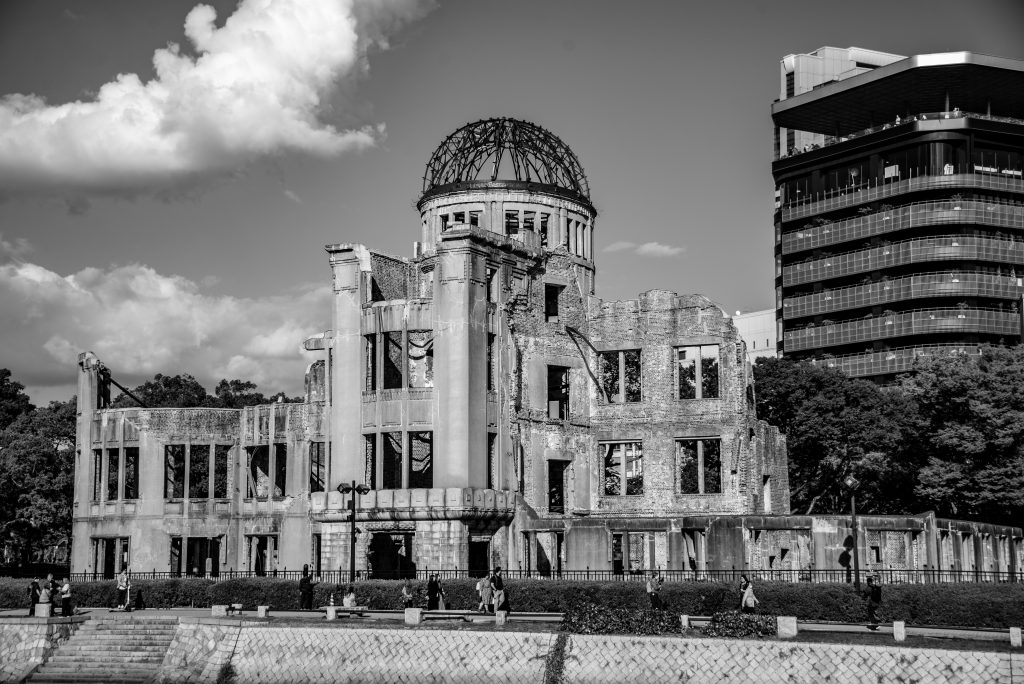
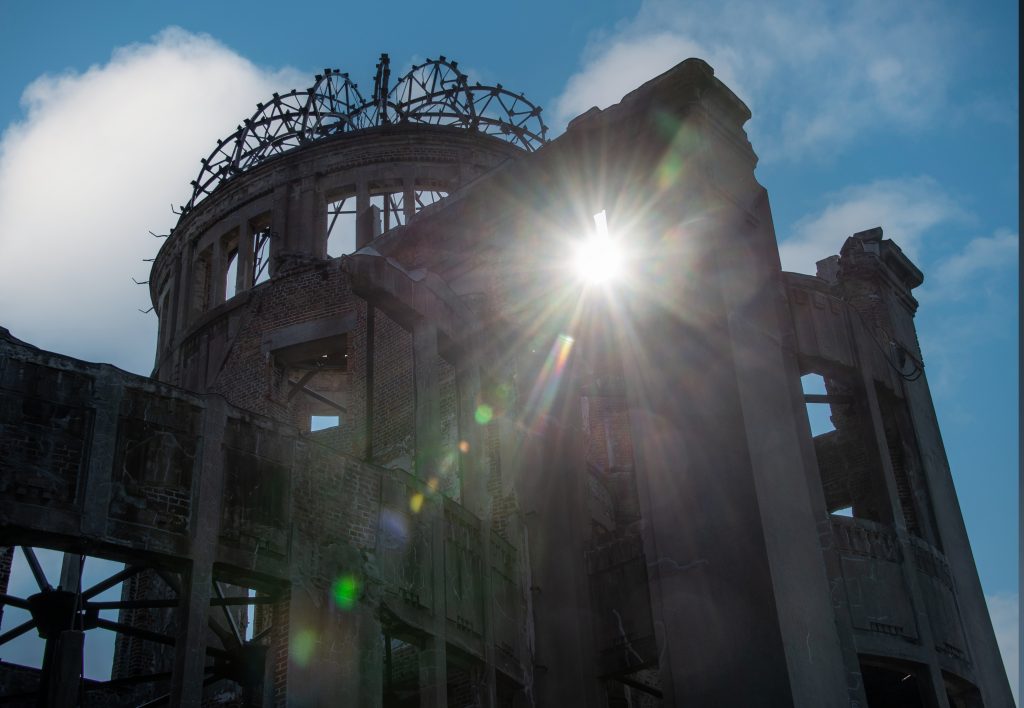
Nagasaki
While Hiroshima chose the stark reality of a ruined building at the hypocenter of the first atomic bomb blast, the people of Nagasaki took a different approach. There is also a gaping hole in that city, but they chose to build a park of monuments contributed by countries around the world, speaking to the hope for peace.
Nagasaki was bombed on August 9, 1945. It was not the original target for the second atomic bomb; the intent had been to strike Kokura but that city was obscured by clouds.
At the center of the bomb’s destruction today is the Nagasaki Peace Park. At one end is the Peace Statue, about 10 meters or 33 feet tall.
The statue mixes eastern and western art, religion, and symbology.
The right hand points to the sky, to where the bomb was dropped. The left arm extends outward to symbolize peace. One leg is folded in a meditative stance, the other extended as if to stand up and offer solace and help.
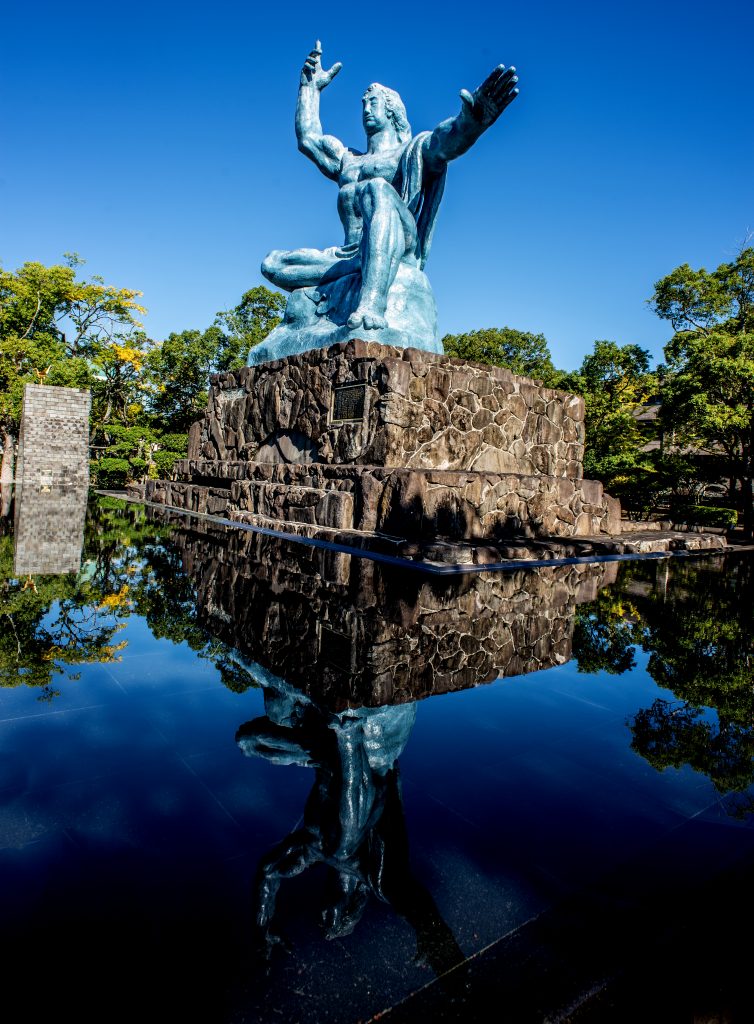

At the end of the trip, in late October, we began the long trip home to Boston. The first leg was a flight from Hong Kong to Tokyo.
As we reached the bottom of the home islands of Japan I noticed a city with a mountain and a plume of smoke rising up toward us. I checked our location on the airplane’s seatback video map: it was Sakurajima in Kagoshima.
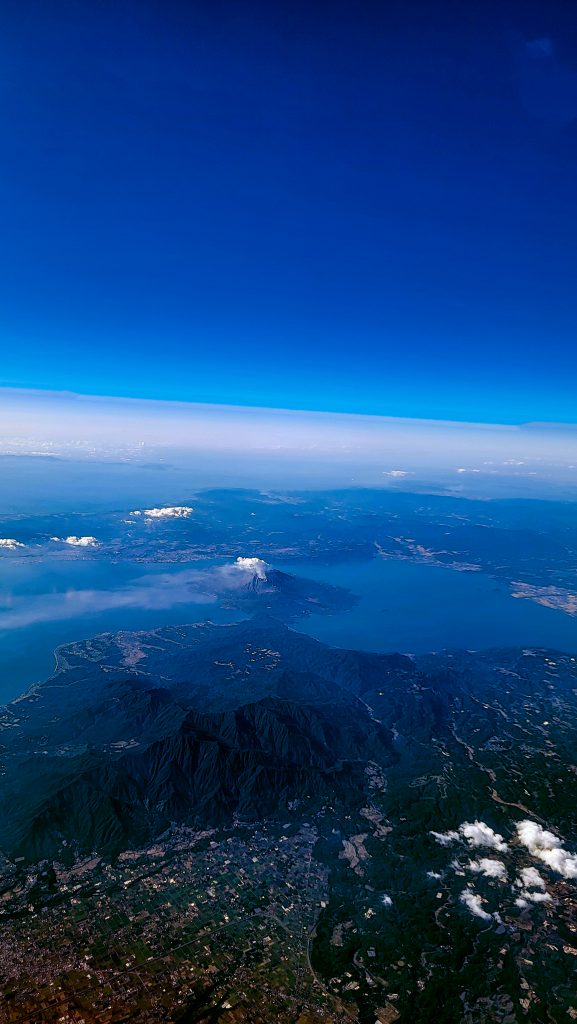
Next month I will conclude my observations on our Asian trip with notes and photos from two places that are betwixt and between modern powers: Taiwan and Hong Kong.
All text and photos copyright 2024 by Corey Sandler. If you would like to use an image for personal or commercial use, please contact me.

